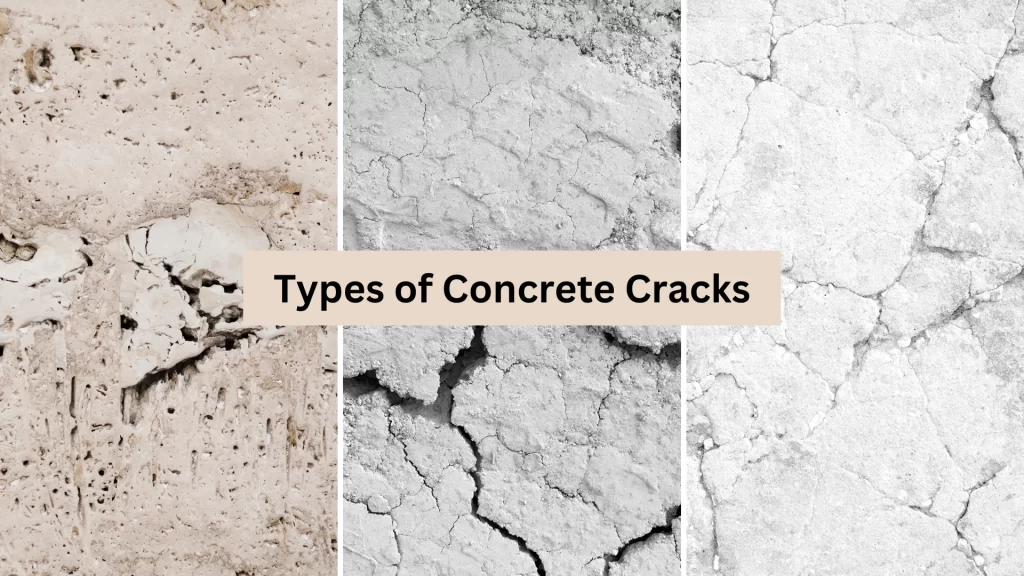One of the most frequent inquiries on ConcreteNetwork.com concerns cracks appearing in newly poured concrete. Homeowners often wonder why their concrete is cracking and whether the workmanship could improve.
Concrete is one of the most durable and long-lasting materials you can use around your home when properly installed. However, concrete contractors must adhere to established guidelines for concrete placement. Achieving durable, high-strength, and crack-resistant concrete requires meticulous attention to detail and adherence to best practices.
Why Concrete Cracks
Understanding the reasons behind cracked concrete can help in diagnosing the problem. However, for a professional assessment, consider contacting a local concrete contractor.
Reason #1: Excess Water in the Mix
Concrete requires only a small amount of water to achieve its maximum strength. However, in residential projects, it’s common for too much water to be added to the mix at the job site to make it easier to work with. This excess water significantly reduces the concrete’s strength.
Shrinkage is a primary cause of cracking. As concrete hardens and dries, it shrinks due to the evaporation of excess water. The wetter the mix, the greater the shrinkage. Concrete slabs can shrink up to 1/2 inch per 100 feet, creating internal forces that pull the slab apart, resulting in cracks.
The key to high-quality concrete is a low water-to-cement ratio, and excess water undermines this ratio.
What You Can Do:
Ensure you know the allowable water content for the mix being used.
Choose a reputable contractor who will use the proper mix, even though it may require more manpower and be more expensive.
Reason #2: Rapid Drying of the Concrete
Rapid drying of the slab can significantly increase the likelihood of cracking. The chemical reaction that transforms concrete from a liquid or plastic state to a solid state requires water. This hydration process continues for days and weeks after pouring.
Adequate curing ensures that water is available for this reaction.
What You Can Do:
Learn about proper curing methods and ensure your contractor will cure the concrete correctly.
Reason #3: Improper Strength Concrete
Concrete comes in various strengths. Verifying that the correct strength is being used for your project is essential.
What You Can Do:
Consult with the ready-mix supplier.
Check with the Ready Mix Concrete Association in your area.
Reason #4: Lack of Control Joints
Control joints are essential to guide where concrete will crack. They should be cut to the depth of the slab and spaced no more than 2-3 times the thickness of the concrete in feet. For example, a 4-inch thick slab should have joints 8-12 feet apart.
What You Can Do:
- Learn more about control joints and ensure your contractor implements them properly.
- Other Considerations:
- Never pour concrete on frozen ground.
- Ensure the ground where the concrete will be placed is compacted.
- Prepare the subgrade according to your soil conditions. In some areas, flatwork can be poured directly on native grade, while 6 inches of base fill and steel rebar may be required in others.
You can achieve a high-quality concrete job by understanding these factors and ensuring your contractor addresses them.
Types of Cracks in Concrete
Understanding different types of concrete cracks can help you determine their severity and the appropriate actions.
Hairline Cracks: These surface cracks should be repaired if they widen over time, pose a hazard, collect dirt, or are unsightly.
Shrinkage Cracks: These occur during curing and can be minimized or prevented with proper joint placement.
Settlement Cracks: happens when the ground beneath the slab is not compacted properly, causing part of the concrete to sink.
Structural Cracks: Cracks wider than a credit card or that run through the entire slab indicate significant issues and require repair or replacement.
Acceptable Crack Widths
Not all concrete cracks require repair. For example, hairline cracks can sometimes be incorporated into decorative finishes, as seen in some floors airbrushed with brown dye to create a crackle pattern.
The question of at what width a crack becomes problematic does not have a definitive answer. This can vary from one project to another and can depend on the perspectives of different stakeholders. The American Concrete Institute does not provide specific standards for determining which cracks need repair based on width alone.
In general, cracks wider than a credit card and running through the concrete are structural and often signal more serious issues. These cracks are rarely acceptable and should be evaluated by an engineer or concrete repair professional.
For hairline or non-structural cracks, whether they require repair depends on several factors:
Crack Movement: Is the crack static, or is it gradually widening? A moving crack may indicate an underlying structural problem.
Tripping Hazard: For horizontal surfaces, is the crack wide enough to pose a tripping hazard?
Moisture Seepage: In foundation walls or slabs, does the crack allow moisture to seep through?
Maintenance Issues: Does the crack trap dirt, creating a maintenance or sanitation problem?
Aesthetic Concerns: Is the crack in a high-visibility area where it detracts from the appearance?
If you choose to repair a crack, be aware that the repair itself might be visible unless covered with an overlay. However, it is often possible to disguise or highlight a crack using techniques such as saw-cutting, staining, and other decorative methods.
How to Prevent Cracks in Concrete Structures
Preventive measures should be implemented during and after the concreting process to minimize cracks in concrete structures. Here are the main factors to consider:
Reduce Water Content in Concrete
Low Water-Cement Ratio:
The water-cement (w/c) ratio, which is the weight of water to the weight of cement used, should be kept low to ensure high concrete strength and reduced cracking. The w/c ratio should not exceed 0.5. While a lower w/c ratio decreases workability, this can be compensated by using plasticizers or superplasticizers. Less water content enhances concrete durability and reduces shrinkage, which is the primary cause of cracks. As concrete hardens, it loses excess water and shrinks. Typically, shrinkage in slabs can be 1/2 inch per 100 feet, creating internal forces that pull the slab apart and cause surface cracks.
Proper Concrete Mix Design and Use of Quality Materials
Proportioned Mix: Ensure the concrete mix is well-proportioned and properly mixed. Insufficient cement or excessive water will weaken the concrete and lead to cracking.
Quality Aggregates: Use good quality, hard, dense aggregates with an optimized gradation to reduce shrinkage. Avoid poor-quality aggregates, shrinkage-promoting admixtures (like accelerators), dirty aggregates that increase water demand, and cement with high shrinkage characteristics.
Finishing of Concrete Surface
Proper Techniques: Use appropriate finishing techniques and timing during and between finishing operations. Flat floating and flat troweling are recommended. Avoid overworking the concrete, especially with vibrating screeds, as this causes the aggregate to settle and excess fines and water to rise.
Avoid Finishing During Bleed Water: Do not finish the concrete while bleed water is present on the surface. Finishing at this stage can reintroduce water into the concrete, leading to cracks.
Proper Curing of Concrete
Prevent Rapid Water Loss: To prevent rapid drying and water loss due to hydration, cure the concrete slab for several days. Common practices include creating a mortar boundary on the slab and keeping it filled with water, covering the slab with water-soaked cotton mats, or applying a curing compound to prevent water loss.
Avoid Loading During Curing: The concrete should not be subjected to loads during the curing period, which can last up to a month.
Proper Placement and Vibration of Concrete
Placement and Vibration: Proper placement, vibration, and finishing of concrete reduce the likelihood of cracks. Proper vibration helps release entrapped air, which can otherwise lead to cracks.
Proper Compaction of Soil to Prevent Settlement Cracks
Soil Compaction: The area beneath the concrete slab must be adequately compacted in layers to prevent soil settlement over time, which can cause surface cracks. This is essential for both home construction and highway projects.
Providing Control Joints in Concrete
Control Joints: Control joints should be placed at regular intervals to manage concrete shrinkage. For a 4-inch deep slab, joints should be 8 to 12 feet apart. These joints are pre-planned cracks, ensuring that concrete cracks occur at designated locations rather than randomly. Engineers should plan these joints to control where the concrete will crack.
By adhering to these preventive measures, you can significantly reduce the likelihood of cracks in concrete structures.
Conclusion
To summarize, prevention is always better than cure. Preventing concrete cracks ensures high quality, saves time and money, and provides peace of mind to the owner.
Choose SRMPR Cements for durability and the best quality cement. Our products are designed to meet the highest standards, ensuring your concrete structures remain strong and crack-free for years to come.



